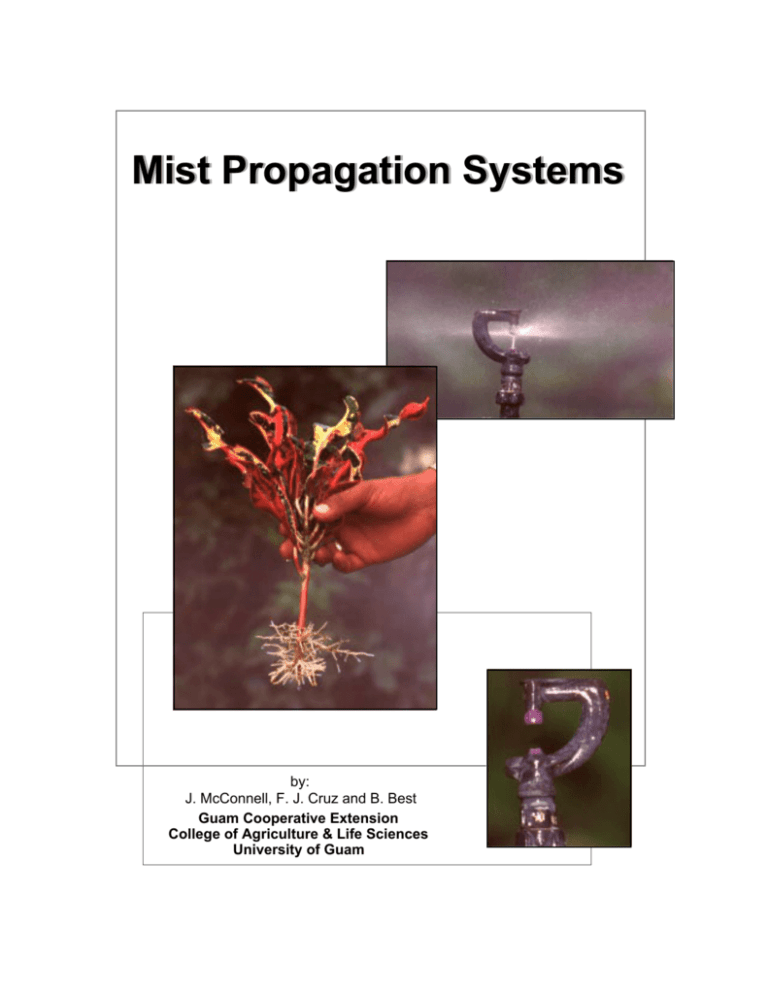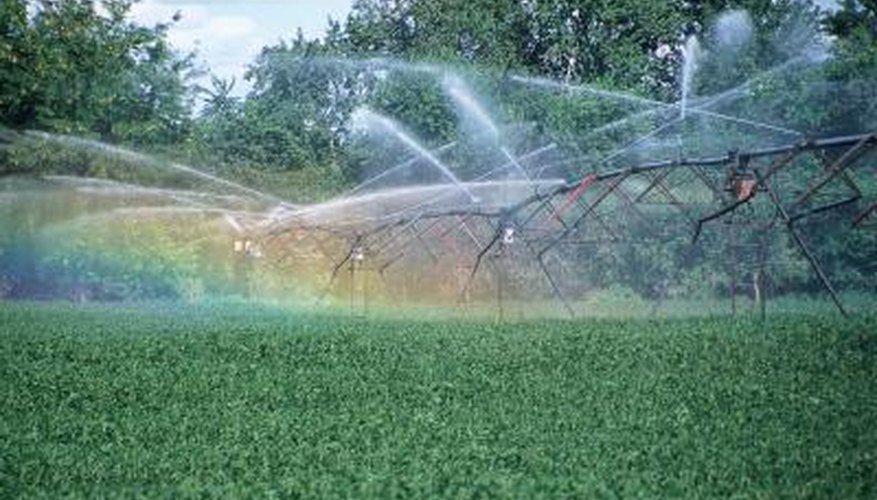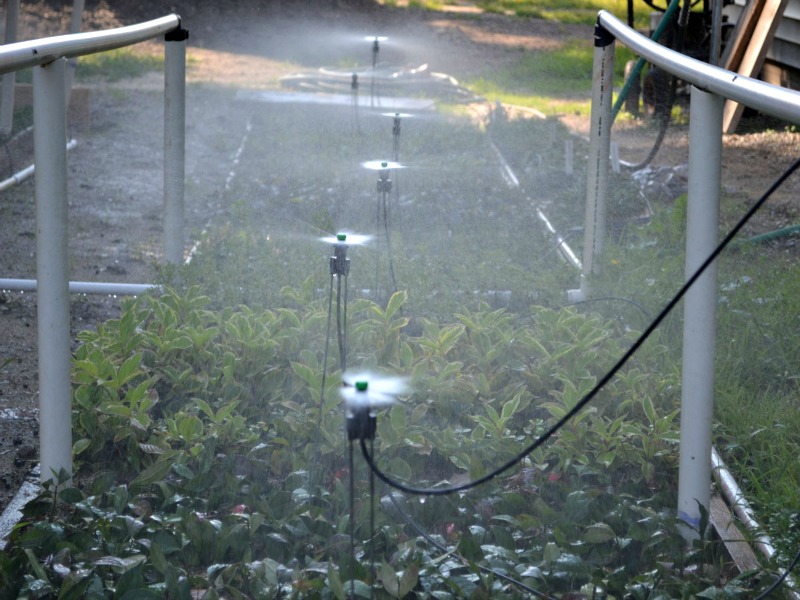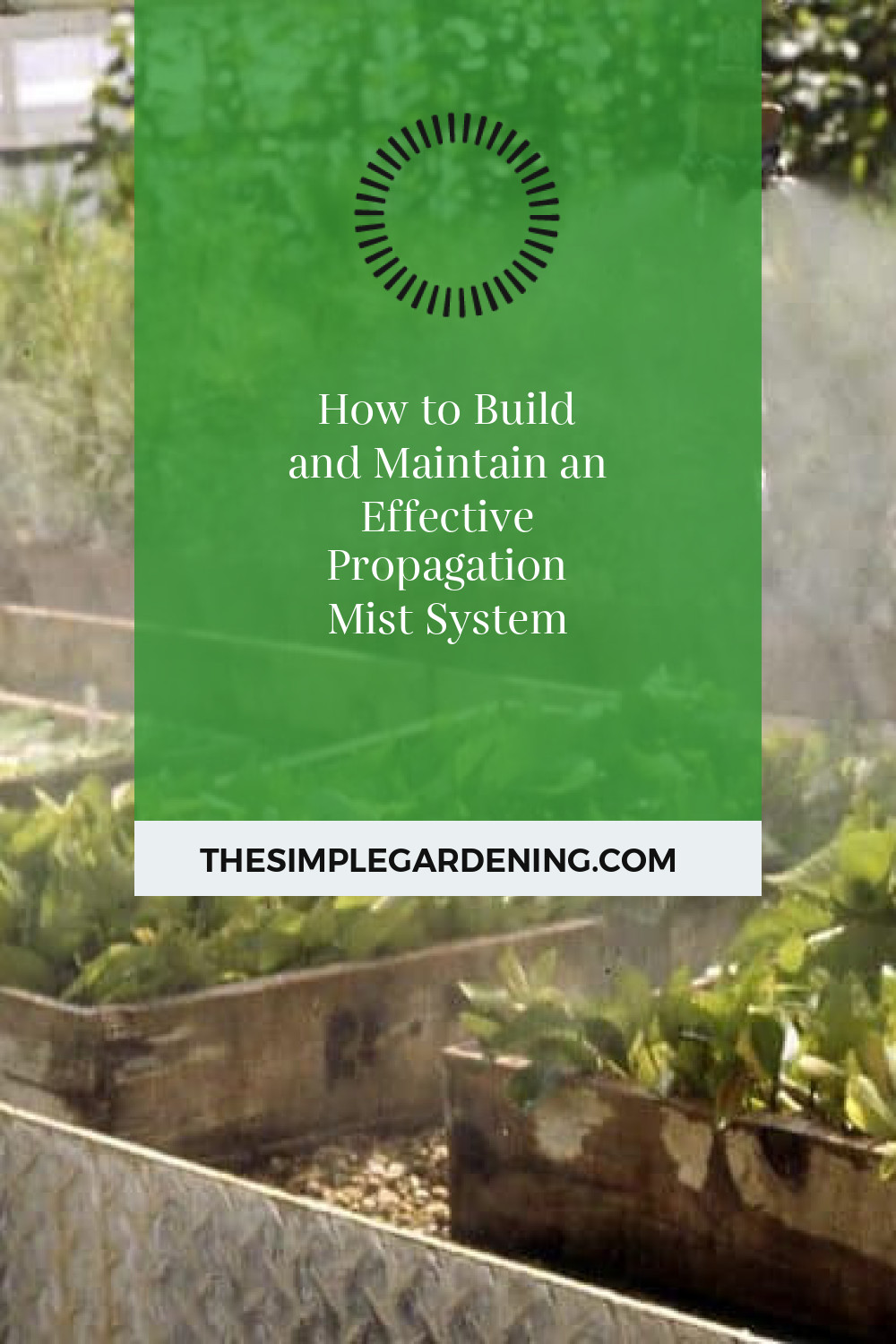Propagating plants successfully often hinges on creating the perfect environment for them to thrive. One such environment can be achieved with propagation mist systems. Whether you’re a home gardener or a commercial grower, understanding and implementing mist systems can significantly enhance your plant propagation efforts. Let’s dive into everything you need to know about propagation mist systems, their components, and how to optimize their use.
Understanding the Concept and Importance of Propagation Mist Systems
Propagation mist systems are designed to maintain high humidity levels around plant cuttings and seedlings. This controlled misting environment reduces water stress on plants, promoting healthier root development and faster growth.
Key Benefits of Propagation Mist Systems
| Benefit | Explanation |
|---|---|
| Improved Rooting | Constant humidity encourages root growth. |
| Water Conservation | Efficient water use compared to manual watering. |
| Consistency | Automated systems ensure consistent misting. |
| Scalability | Suitable for both small and large-scale operations. |
| Healthy Plants | Reduced water stress leads to healthier plants. |
Mist systems are particularly valuable for delicate cuttings that require constant moisture but can’t tolerate waterlogging.
Historical Development of Mist Systems
The evolution of propagation mist systems reflects advances in horticultural technology. Initially, gardeners relied on manual watering and rudimentary misting techniques. Over the years, technological innovations have made these systems more efficient and accessible.
Timeline of Development
| Era | Key Innovations |
|---|---|
| Pre-1950s | Manual misting and basic greenhouse techniques. |
| 1950s-1970s | Introduction of automated misting systems. |
| 1980s-2000s | Advances in nozzle technology and water filtration. |
| 2010s-Present | Integration of sensors and smart controls. |
These advancements have made it easier to create and maintain the perfect propagation environment.

Source Image: greenhouseinfo.com
Components of a Propagation Mist System
A well-functioning mist system comprises several key components. Each part plays a crucial role in ensuring efficient and effective misting.
Misting Nozzles and Their Types
| Nozzle Type | Features | Benefits |
|---|---|---|
| Brass | Durable, cost-effective | Long-lasting, suitable for various conditions |
| Plastic | Lightweight, resistant to corrosion | Affordable, easy to clean |
| Stainless Steel | High resistance to wear and corrosion | Ideal for high-pressure systems |
Choosing the right nozzle type depends on your specific needs and system design.
Water Supply and Filtration Units
Ensuring a clean and reliable water supply is vital for the longevity and effectiveness of your mist system.
| Component | Function |
|---|---|
| Water Source | Provides the necessary water supply. |
| Filtration Units | Remove impurities from the water. |
| Pressure Regulator | Maintains consistent water pressure. |
Regular maintenance of these components is essential to prevent clogs and ensure efficient operation.
Timers and Controllers for Automation
Automation is a significant advantage of modern mist systems, allowing precise control over misting schedules.
| Timer Type | Features |
|---|---|
| Digital Timers | Programmable schedules, precise control. |
| Analog Timers | Simplicity, ease of use. |
| Smart Controllers | Integration with sensors, remote access. |
Automated systems help maintain consistent humidity levels, crucial for successful propagation.
Source Image: greenvalleyolive.blogspot.com
Designing Your Mist System
Designing an effective mist system involves careful planning and consideration of your specific needs and available space.
Assessing Space and Plant Needs
| Factor | Considerations |
|---|---|
| Space Size | Determine the area to be covered by the mist system. |
| Plant Types | Different plants may require different misting intensities. |
| Propagation Goals | Scale the system based on your propagation volume. |
Understanding these factors helps in choosing the right components and layout for your mist system.
Layout Planning for Optimal Coverage
| Layout Type | Advantages |
|---|---|
| Grid Layout | Even coverage, easy to expand. |
| Zonal Layout | Customizable for different plant types. |
| Perimeter Layout | Ideal for small or irregularly shaped spaces. |
Choosing the right layout ensures efficient water use and optimal mist distribution.
Installation Guide
Setting up your mist system correctly is crucial for its effectiveness and longevity.
Step-by-Step Setup Instructions
- Select Location: Choose a suitable location with access to water and power.
- Install Filtration: Set up the filtration unit to ensure clean water supply.
- Lay Out Tubing: Arrange the tubing according to your planned layout.
- Attach Nozzles: Connect nozzles to the tubing at appropriate intervals.
- Connect Timers: Install timers and controllers for automated misting.
- Test System: Run the system to check for leaks and proper operation.
Essential Tools and Materials
| Tool/Material | Purpose |
|---|---|
| Tubing | Distributes water to nozzles. |
| Nozzles | Create the mist for propagation. |
| Timers | Automate the misting process. |
| Filtration Units | Ensure clean water supply. |
| Connectors | Join tubing sections and attach nozzles. |
Having the right tools and materials is essential for a smooth installation process.
Safety Tips During Installation
- Wear Protective Gear: Safety glasses and gloves to protect from water pressure.
- Check Electrical Connections: Ensure all electrical components are properly insulated.
- Secure Components: Firmly attach all parts to avoid leaks and system failures.

Source Image: www.mrdrip.com
Types of Propagation Mist Systems
There are various types of mist systems to suit different needs and preferences.
High-Pressure vs. Low-Pressure Systems
| System Type | Features | Ideal For |
|---|---|---|
| High-Pressure | Fine mist, high coverage | Large-scale, commercial operations |
| Low-Pressure | Coarser mist, simpler setup | Small gardens, home use |
Choosing between high-pressure and low-pressure systems depends on your scale and precision requirements.
Portable vs. Fixed Systems
| System Type | Features | Benefits |
|---|---|---|
| Portable | Easy to move, flexible setup | Suitable for temporary setups |
| Fixed | Permanent installation, robust design | Ideal for long-term use |
Consider whether you need flexibility or a permanent solution when selecting your mist system.
DIY vs. Commercially Available Kits
| Kit Type | Features | Pros and Cons |
|---|---|---|
| DIY Kits | Customizable, hands-on | More work but tailored to your needs |
| Commercial Kits | Pre-packaged, easy to install | Convenient but less customizable |
Both options have their advantages, so choose based on your comfort with DIY projects and specific requirements.
Source Image: www.agriculture2u.com
Propagation Mist Systems
Selecting the Right Misting Nozzles
Nozzles are a critical component of your mist system, and selecting the right ones is crucial for effective misting.
Nozzle Materials and Their Impact
| Material | Features | Benefits |
|---|---|---|
| Brass | Durable, cost-effective | Long-lasting, suitable for various conditions |
| Plastic | Lightweight, resistant to corrosion | Affordable, easy to clean |
| Stainless Steel | High resistance to wear and corrosion | Ideal for high-pressure systems |
Each material has its strengths, so choose based on your system’s pressure and environmental conditions.
Spray Patterns and Coverage Area
| Spray Pattern | Coverage Area | Ideal Use |
|---|---|---|
| Full Cone | Wide, even coverage | General misting |
| Flat Fan | Narrow, focused spray | Targeted misting |
| Hollow Cone | Circular, fine mist | High-humidity requirements |
Understanding spray patterns helps in achieving optimal mist distribution for your plants.
Maintenance and Cleaning of Nozzles
Regular maintenance ensures your mist system operates efficiently.
| Maintenance Task | Frequency | Purpose |
|---|---|---|
| Cleaning | Monthly | Prevent clogs and ensure even misting |
| Inspection | Bi-monthly | Check for wear and tear |
| Replacement | Annually | Ensure optimal performance |
Keeping your nozzles clean and in good condition is essential for the longevity of your system.
Water Quality and Filtration
Water quality directly impacts the effectiveness of your mist system and the health of your plants.
Importance of Clean Water for Propagation
Using clean water prevents clogging and ensures that plants receive the best possible hydration.
| Issue | Impact on Plants |
|---|---|
| Contaminants | Can cause disease and inhibit growth |
| Mineral Deposits | May clog nozzles and affect misting efficiency |
Types of Filtration Systems
| Filtration Type | Features | Benefits |
|---|---|---|
| Mechanical Filters | Remove particles | Prevent clogs |
| Activated Carbon Filters | Remove impurities and odors | Improve water quality |
| UV Filters | Kill bacteria and viruses | Ensure clean water |
Choosing the right filtration system ensures your plants get the best start.
Regular Maintenance of Water Filters
| Task | Frequency | Purpose |
|---|---|---|
| Cleaning Filters | Monthly | Maintain water flow and quality |
| Replacing Filters | As needed | Ensure effective filtration |
| Inspecting System | Quarterly | Check for issues and prevent failures |
Regular maintenance of your water filters is crucial for system longevity and plant health.

Source Image: studylib.net
Automation and Control Systems
Automation can significantly enhance the efficiency and effectiveness of your mist system.
Using Timers for Consistent Misting
| Timer Type | Features | Benefits |
|---|---|---|
| Digital | Precise scheduling | Consistent misting |
| Analog | Simple operation | Easy to set up |
| Smart Timers | Remote control, integration with sensors | Advanced control |
Timers help maintain the right humidity levels without constant manual intervention.
Integrating Sensors for Environmental Control
| Sensor Type | Features | Benefits |
|---|---|---|
| Humidity Sensors | Measure humidity levels | Adjust misting based on conditions |
| Temperature Sensors | Monitor temperature | Ensure optimal growing conditions |
| Light Sensors | Detect light levels | Adjust misting schedules accordingly |
Sensors provide real-time data, allowing for more precise control of your misting environment.
Advanced Automation Options
| Option | Features | Benefits |
|---|---|---|
| Smart Controllers | Integration with various sensors, remote access | Fine-tuned control |
| Automated Valves | Control water flow automatically | Efficient water use |
| Climate Control Systems | Comprehensive environmental management | Optimal growth conditions |
Advanced automation can transform your mist system into a highly efficient propagation tool.
Optimizing Environmental Conditions
Creating the perfect environment involves balancing temperature, humidity, light, and airflow.
Ideal Temperature and Humidity Levels
| Factor | Optimal Range | Impact on Plants |
|---|---|---|
| Temperature | 70-80°F (21-27°C) | Promotes root growth |
| Humidity | 80-90% | Prevents dehydration |
Maintaining these conditions helps ensure successful propagation.
Light Requirements for Different Plants
| Plant Type | Light Requirement | Best Practices |
|---|---|---|
| Succulents | Bright, indirect light | Avoid direct sunlight |
| Tropical Plants | Moderate to high light | Use grow lights if necessary |
| Herbs | Full sun to partial shade | Rotate plants for even growth |
Adjusting light levels based on plant needs is crucial for healthy growth.
Managing Airflow and Ventilation
| Task | Frequency | Purpose |
|---|---|---|
| Ventilation | Daily | Prevent mold and mildew |
| Air Circulation | Continuous | Ensure even distribution of humidity |
Good airflow helps maintain a healthy propagation environment.

Source Image: www.gardenguides.com
Common Problems and Troubleshooting
Despite careful planning, issues can arise. Here’s how to address common problems.
Addressing Uneven Misting
| Problem | Solution |
|---|---|
| Clogged Nozzles | Clean or replace nozzles |
| Low Water Pressure | Check and adjust pressure settings |
Ensuring even misting is essential for consistent plant growth.
Solving Clogging Issues
| Cause | Solution |
|---|---|
| Debris in Water | Install and maintain filters |
| Mineral Deposits | Use demineralized water |
Regular maintenance prevents clogs and ensures system efficiency.
Dealing with Water Supply Problems
| Issue | Solution |
|---|---|
| Low Pressure | Check and adjust pressure regulator |
| Inconsistent Supply | Ensure reliable water source |
Addressing water supply issues promptly is crucial for system operation.
Maintaining Your Mist System
Routine maintenance ensures your mist system operates efficiently and lasts longer.
Routine Checks and Maintenance Tasks
| Task | Frequency | Purpose |
|---|---|---|
| Inspect Nozzles | Monthly | Ensure even misting |
| Clean Filters | Monthly | Maintain water quality |
| Check Timers | Quarterly | Ensure proper operation |
Regular checks prevent issues and prolong the life of your system.
Seasonal Maintenance Tips
| Season | Task | Purpose |
|---|---|---|
| Spring | Inspect and clean entire system | Prepare for peak use |
| Summer | Check water supply and pressure | Ensure consistent operation |
| Fall | Clean and store unused components | Prepare for winter |
| Winter | Insulate exposed parts | Prevent freezing damage |
Adjusting maintenance tasks based on the season helps keep your system in top shape.
Long-term Care for System Longevity
| Task | Frequency | Purpose |
|---|---|---|
| Replace Worn Parts | As needed | Maintain efficiency |
| Upgrade Components | Periodically | Improve system performance |
Long-term care ensures your mist system continues to support healthy plant propagation.

Source Image: mikesbackyardnursery.com
Propagation Mist Systems
Cost Considerations
Understanding the costs involved helps in planning and budgeting for your mist system.
Initial Setup Costs
| Component | Cost Range | Factors |
|---|---|---|
| Nozzles | $10-$50 per pack | Depends on material and type |
| Filtration Units | $50-$200 | Quality and capacity |
| Timers | $20-$100 | Features and brand |
Initial setup costs vary based on system size and complexity.
Ongoing Operational Expenses
| Expense | Cost Range | Frequency |
|---|---|---|
| Water | $10-$50/month | Depends on usage |
| Electricity | $5-$30/month | Varies with system |
| Maintenance | $20-$100/year | Replacement parts and cleaning supplies |
Operational expenses include water, electricity, and maintenance costs.
Cost-Effective Upgrades and Alternatives
| Upgrade | Cost Range | Benefits |
|---|---|---|
| Smart Controllers | $100-$300 | Advanced control, efficiency |
| Higher Quality Nozzles | $50-$100 | Improved performance, longevity |
Investing in quality components and smart upgrades can be cost-effective in the long run.
Applications of Mist Systems
Mist systems have various applications, from home gardens to commercial nurseries.
Propagating Seeds and Cuttings
| Benefit | Explanation |
|---|---|
| High Success Rate | Consistent humidity improves germination and rooting |
| Reduced Stress | Misting reduces water stress on delicate cuttings |
Mist systems create the ideal environment for seeds and cuttings to thrive.
Enhancing Growth in Greenhouses
| Benefit | Explanation |
|---|---|
| Optimal Humidity | Maintains ideal growing conditions |
| Consistent Watering | Ensures even moisture distribution |
Greenhouse growers can significantly benefit from the controlled environment provided by mist systems.
Uses in Commercial Nurseries
| Benefit | Explanation |
|---|---|
| Scalability | Suitable for large-scale operations |
| Efficiency | Automated systems reduce labor costs |
Commercial nurseries use mist systems to improve efficiency and plant quality.

Source Image: www.youtube.com
Case Studies and Success Stories
Real-world examples highlight the effectiveness of mist systems.
Examples from Home Gardeners
| Gardener | Success Story |
|---|---|
| Jane Doe | Improved seed germination rates by 50% with a DIY mist system. |
| John Smith | Successfully propagated rare tropical plants using a portable mist system. |
Home gardeners often see significant improvements with mist systems.
Commercial Growers’ Experiences
| Grower | Success Story |
|---|---|
| Green Thumb Nurseries | Increased production by 30% using advanced mist systems. |
| Plant Haven | Reduced labor costs by 20% with automated misting. |
Commercial growers benefit from the efficiency and scalability of mist systems.
Lessons Learned from Real-World Applications
| Lesson | Explanation |
|---|---|
| Regular Maintenance | Prevents issues and ensures consistent performance |
| Proper Planning | Tailoring the system to specific needs enhances effectiveness |
Learning from others’ experiences can help optimize your mist system setup and usage.
Future Trends in Propagation Mist Systems
The future of propagation mist systems looks promising with ongoing technological advancements and a focus on sustainability.
Technological Advancements
| Trend | Impact |
|---|---|
| Smart Systems | Enhanced control and efficiency |
| Advanced Nozzle Design | Improved misting precision |
New technologies continue to improve the performance and user-friendliness of mist systems.
Sustainable Practices
| Practice | Benefit |
|---|---|
| Water Recycling | Reduces water usage |
| Eco-Friendly Materials | Minimizes environmental impact |
Sustainable practices make mist systems more eco-friendly and cost-effective.
Emerging Research and Innovations
| Innovation | Potential Impact |
|---|---|
| Nanotechnology | Enhanced filtration and misting precision |
| AI Integration | Predictive control for optimal growing conditions |
Ongoing research and innovations promise exciting developments in mist system technology.
By understanding and implementing the best practices and innovations in propagation mist systems, you can significantly enhance your plant propagation success, whether in a home garden or a commercial nursery.

